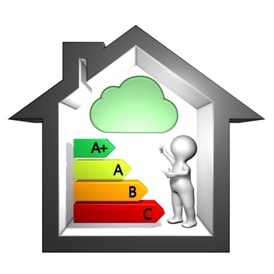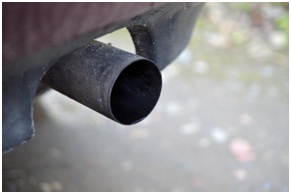 Volatile Organic Compounds are a large group of carbon based chemicals that easily evaporate at room temperature. While some VOCs come with an extremely pungent smell, others have no odor at all. There are nearly thousands of VOCs produced and constantly used in our daily lives, some of the most common examples include:
Volatile Organic Compounds are a large group of carbon based chemicals that easily evaporate at room temperature. While some VOCs come with an extremely pungent smell, others have no odor at all. There are nearly thousands of VOCs produced and constantly used in our daily lives, some of the most common examples include:
- Benzene
- Acetone
- Formaldehyde
- Methylene Chloride
- Toluene
- Xylene
Where Do VOCs Come From?
We have a large variety of products in our home that release VOCs. Some of the most common examples of VOC emitting products include paints, varnishes, air fresheners, cosmetics, fuel oil, vehicle exhausts and others.
What Are the Health Effects of VOCs?
 The risk of any effects from inhaling chemicals depends on the concentration of the chemical in the air, how long it is in the air and how often it is inhaledby someone. When being analyzed, scientists consider short-term exposures, which are calculated in hours or days, and long –term exposures, which can be months or even a lifetime.
The risk of any effects from inhaling chemicals depends on the concentration of the chemical in the air, how long it is in the air and how often it is inhaledby someone. When being analyzed, scientists consider short-term exposures, which are calculated in hours or days, and long –term exposures, which can be months or even a lifetime.
Breathing lower levels of VOCs for a long period of time may increase risk of health problems in some people. On the other hand, several different studies suggest that people who already have asthma or are particularly sensitive to chemicals tend to experience worse symptoms. However, this exposure is much different to occupational VOC exposure.
As VOCs refer to a complete group of chemicals, each chemical has its own level of toxicity and comes with its own potential for adversely affecting health. Some of the most common symptoms of VOC exposure include:
Short-Term Exposure to High Levels of VOCs
- Headaches
- Nausea
- Dizziness
- Irritation of eyes, nose and throat
Long-Term Exposure to High Levels of VOCs
- Liver damage
- Kidney damage
- Cancer
- Central Nervous System damage
What Are Safe VOC Levels?
The best approach to protecting yourself from the harmful effects is by limiting exposure to VOCs. If you think you may be having health problems, VOC testing services recommend reducing the levels at home. If the symptoms persist, you are recommended to consult your doctor to rule out all other serious health conditions.
As most health related studies are conducted on single chemicals, not much is known about the health effects of exposure to combination of chemicals. As the levels of toxicity differ for each VOC, there are no health-based standards for VOCs as a group.
Are You At A Greater Risk Of VOC Exposure Than Others?
If you have respiratory problems such as asthma, you are much more likely to encounter serious health problems when exposed to VOCs. On the other hand, elderly, young children and people with heightened sensitivity to chemicals may be more prone to irritation and illness from VOCs.
What to Do About VOCs in Home?
Although there are numbers of home screening kits for VOC testing, they offer limited use and don’t really fix the problem. Instead of testing, the first step should be to conduct an inspection of your home for the common sources of VOCs. Some of the most commonly problematic sources include household furnishings that tend to give off VOC gases when they are new. Other possible sources include carpets, paints, plastics and electronic devices.
Once you determine the likely sources of VOCs, you can take a number of different steps to cut down the exposure. If you are unable to do so on your own, feel free to get in touch with us to learn more about how we can help with VOC testing and remediation.
How Do I Reduce VOC Levels At Home?
The easiest way is to remove products that give off VOCs. Most VOC containing products give off all the gas in a short period of time while others continue giving off gas for a longer period. A few steps you can take to reduce VOC levels at home include:
Source Control
Removing the number of products in your home that gives off VOCs would be the first step. Only purchase chemicals that you know you need to use and follow directions on product labels. Store these chemicals outside as even unused, packed chemicals can release VOCs into the air.
Ventilation and Climate Control
Boost ventilation in your home by opening windows, use fans and maximize the amount of air you bring from the outside. Also keep both temperature and humidity as low as possible as chemicals are more likely to give off gas under warmer conditions.
In short, the easiest way to limit VOCs inside your home is to cut down the potential sources of VOCs. Get in touch with us at Phoslab Environmental to learn more about or VOC testing services and VOC testing methods.
